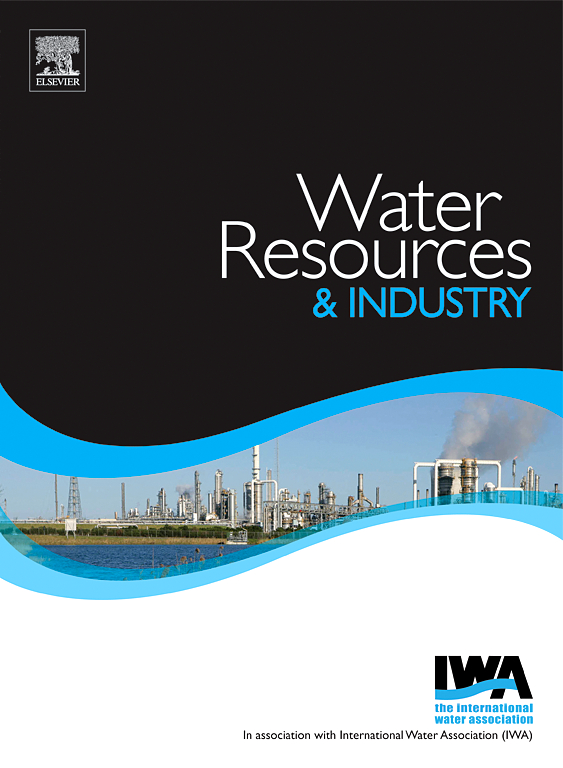Lab-scale experiments with a monovalent ion selective membrane capacitive deionization for nitrate removal
IF 4.5
3区 工程技术
Q1 WATER RESOURCES
引用次数: 0
Abstract
Groundwater with high nitrate concentrations requires treatment before potable use. Conventional treatment methods such as nanofiltration and reverse osmosis can be used for desalination of most solutes. In contrast, a monovalent selective membrane capacitive deionization (mMCDI) can be used for selective nitrate removal. We use a nanofiltration membrane and anion exchange membranes with an additional neutral layer (AEM-Neutral) or a polyamide layer (AEM-PA) for selective nitrate removal with mMCDI by using a solution of mixed monovalent and polyvalent ions. Monovalent ion selectivity in short-term experiments is up to 17.3 with a nanofiltration membrane, up to 1.7 for AEM-Neutral and up to 5.2 for AEM-PA, whereby the specific energy consumption and water recovery depends on cell structure, applied electric voltage, flow rate and desorption time. Selective nitrate removal with AEM-PA or AEM-Neutral at 0.8 V demonstrated a specific energy consumption of 2 Wh g−1 removed nitrate, lower than pressure-driven membrane processes.

一价离子选择性膜电容去离子去除硝酸盐的实验室规模实验
硝酸盐浓度高的地下水在饮用前需要处理。纳滤和反渗透等常规处理方法可用于大多数溶质的脱盐。相比之下,单价选择性膜电容去离子(mMCDI)可用于选择性去除硝酸盐。我们使用纳滤膜和带有额外中性层(AEM-Neutral)或聚酰胺层(AEM-PA)的阴离子交换膜,通过使用一价和多价离子混合溶液,选择性地用mMCDI去除硝酸盐。短期实验中,纳滤膜的单价离子选择性可达17.3,AEM-Neutral可达1.7,AEM-PA可达5.2,其中比能量消耗和水回收率取决于细胞结构、外加电压、流速和解吸时间。使用AEM-PA或AEM-Neutral在0.8 V下选择性去除硝酸盐,比能耗为2 Wh g−1,低于压力驱动膜法。
本文章由计算机程序翻译,如有差异,请以英文原文为准。
求助全文
约1分钟内获得全文
求助全文
来源期刊

Water Resources and Industry
Social Sciences-Geography, Planning and Development
CiteScore
8.10
自引率
5.90%
发文量
23
审稿时长
75 days
期刊介绍:
Water Resources and Industry moves research to innovation by focusing on the role industry plays in the exploitation, management and treatment of water resources. Different industries use radically different water resources in their production processes, while they produce, treat and dispose a wide variety of wastewater qualities. Depending on the geographical location of the facilities, the impact on the local resources will vary, pre-empting the applicability of one single approach. The aims and scope of the journal include: -Industrial water footprint assessment - an evaluation of tools and methodologies -What constitutes good corporate governance and policy and how to evaluate water-related risk -What constitutes good stakeholder collaboration and engagement -New technologies enabling companies to better manage water resources -Integration of water and energy and of water treatment and production processes in industry
 求助内容:
求助内容: 应助结果提醒方式:
应助结果提醒方式:


